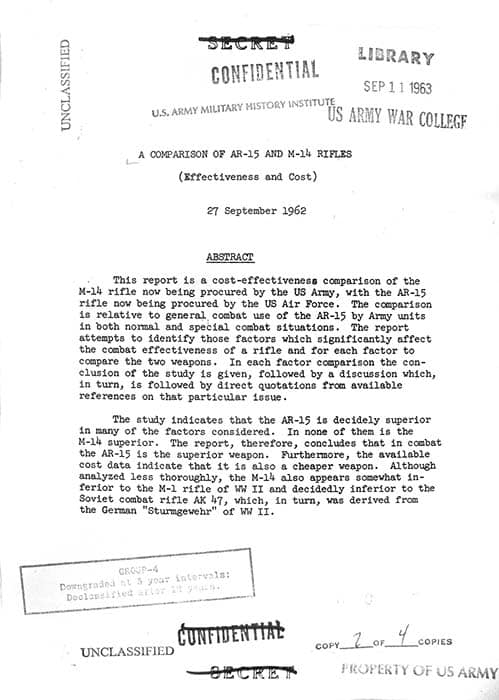
By Frank Iannamico
Today, many associate the name AR-15 with a Colt-made semiautomatic rifle manufactured for the civilian market. However, prior to its adoption by the U.S. military and being named the M16, the select-fire rifle was designated as the AR-15.
Before the AR-15’s official adoption as the U.S. M16, the weapon underwent a long series of trials and evaluations, most of them directly comparing it to the Standard A infantry rifle at the time, the 7.62mm M14.
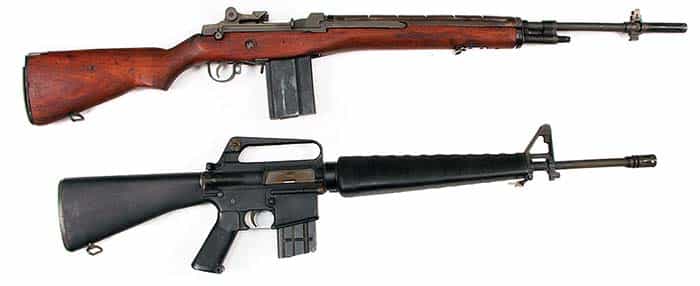
The M14 was officially adopted on May 1, 1957, to replace the M1 Garand rifle, but due to peace-time budgets, series production did not start until 1959. About the same time, Colt bought the rights to the AR-15 from Armalite and began trying to sell the weapon to the U.S. Army.
The conflict in Vietnam was beginning to escalate during the same period. By 1961, the steady progress of the insurgency was reaching crisis levels. The new Kennedy administration increased American support for the South Vietnamese government. By December of 1961, 3,200 U.S. military personnel were in Vietnam as advisors, which included Army Green Beret instructors and CIA personnel. The U.S. effort was supported by millions of dollars in military equipment and economic aid. Many surplus World War II weapons were provided to the South Vietnamese Army. The Vietnamese soldiers, generally being of small stature, had difficulty handling the M1 Garand rifle, and as a result, the handy lightweight M1 and M2 carbines became quite popular. However, as in World War II and Korea, the carbine proved to lack stopping power in many situations. As the war progressed, newer M14 rifles were issued to U.S. and Vietnamese troops. Like the M1 rifle, the M14 proved difficult to handle for the Vietnamese. Additionally, the M14 proved to be poorly suited to jungle warfare, due in part to its 44.3-inch length and powerful cartridge.

Although the M14 had a full-auto feature, most of the rifles issued had their selectors replaced with a “lock,” making the rifles capable of only semiautomatic operation. This was done to keep troops from wasting ammunition, and because the M14 was quite difficult to control in the automatic mode of fire. Because of the size and weight of the 7.62mm cartridges, a standard combat load for the M14 was 220 rounds.
The unconventional appearance of the AR-15 rifle and the questionable lethality of the weapon’s relatively small 5.56x45mm cartridge were causing doubt among the old guard. This would not be the first caliber controversy of the U.S. Army, who in the past resisted any reduction in caliber, insisting on full-power .30 caliber ammunition. This thinking had led to the adoption of the 7.62mm cartridge, despite opposition from other NATO countries, who wanted a small mid-range round similar to the 7.92 Kurz cartridge fielded by the Germans for their Sturmgewehr during World War II.
The following are excerpts from a formerly SECRET 1962 U.S. Army document, comparing the AR-15 and M14 rifles. The document contains a summary of tests that ran from 1958 to 1962. Note to M14 aficionados, the following text is from U.S. Army reports and does not necessarily reflect the beliefs or opinions of the author or SAR magazine.
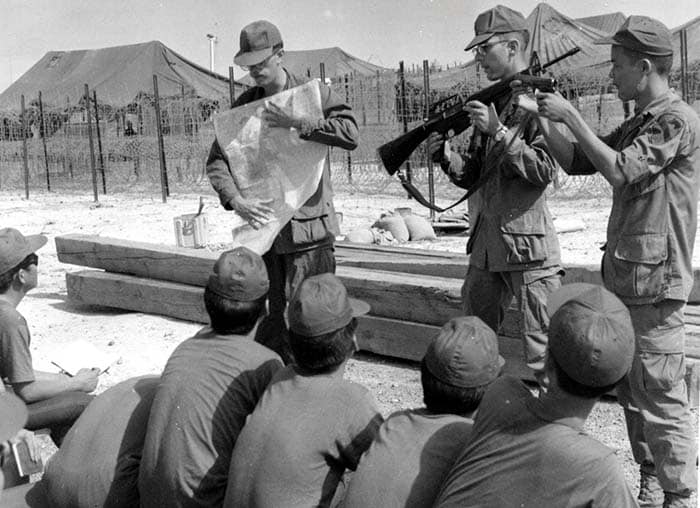
Squad Effectiveness
Army tests conducted in 1959 showed that, with regard to squad hit potential, a five-man squad armed with the AR-15 rifle would be more effective than an eleven-man squad armed with the M14 rifle. This was due to the greater accuracy and rate of fire in the AR-15. In automatic fire capability and tactical flexibility, the AR-15 rifle is markedly superior to the M14. The AR-15 rifle can replace, with gains in each case, all current shoulder fired weapons, and it is also suitable for use by the USAF and by small-stature U.S. supported forces. The M14 rifle is marginal at best as a replacement for the BAR, is somewhat less satisfactory as a semiautomatic rifle, and is not capable of replacing the submachine gun or the M79 grenade launcher. The M14 rifle is also not suitable for use by small-stature U.S. supported forces or the USAF. Soviet forces armed with the AK assault rifle have a definite firepower effectiveness advantage over U.S. forces equipped with either the M1 or the M14 rifle, because of the AK’s effective automatic fire capability and the enemy’s ability to carry more ammunition. U.S. forces armed with the AR-15 rifle would have a marked firepower advantage over Soviet forces armed with the AK assault rifle. The AR-15 is more lethal, the weapon and ammunition are lighter, and the bullet’s trajectory flatter.
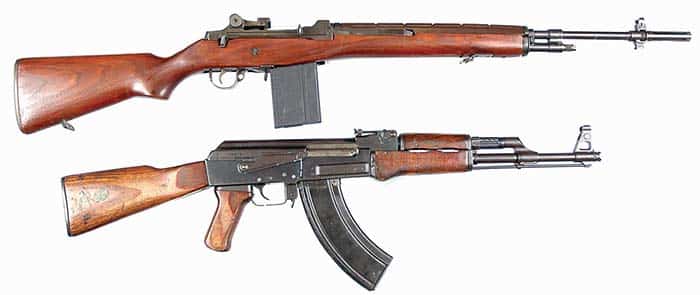
Regarding the facility of production and cost, the AR-15 rifle can be produced with less difficulty, to a higher quality and at a lower cost than the M14 rifle. It is estimated that in quantity production the item cost of the AR-15 rifle, ammunition, spare parts and accessories would be about two-thirds of the item costs for corresponding items for the M14 rifle system. In addition, the cost for the M79 grenade launcher at $118 per weapon would be eliminated.
In reliability, durability, ruggedness, performance under adverse conditions and ease of maintenance, the AR-15 rifle is a significant improvement over any of the standard weapons, including the M14 rifle. Earlier reports that the AR-15 rifle is deficient in performance under Arctic conditions or with rain in the barrel are incorrect.
U.S. Army Combat Development Experiment Center (CDEC) 1959
With the presently planned battle load of 22.39 pounds, a soldier would carry 650 rounds of the lightweight, high-velocity ammunition for the AR-15, or 220 rounds of M14 ammunition. This does not include the weight of the magazines. The weight of the AR-15 magazine with 20-round capacity is 0.18 pounds, compared to 0.5 pounds of the 20-round capacity M14 magazine. For a 220-round basic load with the weight of the magazine considered, the soldier armed with the AR-15 would carry 12 pounds less than the soldier armed with the M14, a weight reduction of 50 percent.
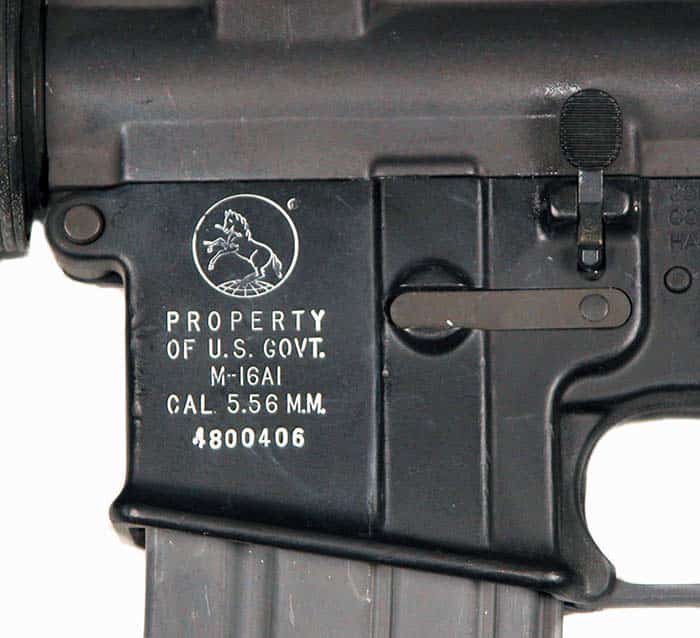
Accuracy
The following excerpt is from a report which involved test firing in 1958, comparing the AR-15 in early stages of development with the national match model of the M1 rifle.
The total score in the 200-yard stage of the qualification course was 554-17V with the AR-15, as compared with the total score of 556-26V for the M1 rifle. The score obtained with the AR-15 is much higher than would be expected considering the difference in accuracy between the two rifles. This is accounted for by the superior handling qualities of the AR-15 rifle, especially when firing from the standing position. The transition firing test showed the M14 and the AR-15 rifle equal in hit probability for the transition range used. However, in nearly all instances, the rifleman required a full 40 seconds to engage the 10 targets with the M14 rifle, and approximately 20 to 25 seconds to engage 10 targets with the AR-15. A possible explanation of the superior hit distribution capability of the AR-15 is that the lighter weapon can be shifted more rapidly from target to target and can be aligned more quickly than the M14.
The Need for Automatic Fire
The belief that the hit probability is significantly higher, against separate known targets at 100 yards and further, for semiautomatic fire than automatic fire can be misleading. Both forms of fire, selectively available to the rifleman, are needed. However, full automatic fire has a particularly significant role to play, which is not always obvious to the user. These include fire at very close ranges, assault fire, supporting and neutralizing fire, hits on unknown targets and last, but not least, the psychological effect on the shooter and the enemy. Short-range automatic fire applications include assault, village fighting, defense against massed attack, night and jungle fighting and patrol action. Lethal fire capability at close range is particularly important, because most of the killing that is decisive to the outcome of a battle takes place at very close range, possibly from 10 to 40 yards. In recent conflicts, it has been possible to achieve the proper automatic fire effects only by a mix of automatic and semiautomatic weapons (M1 rifle, BAR, carbine and submachine gun) with resultant problems of reduced sustained fire capability, training, weight, logistics and different ammunition.
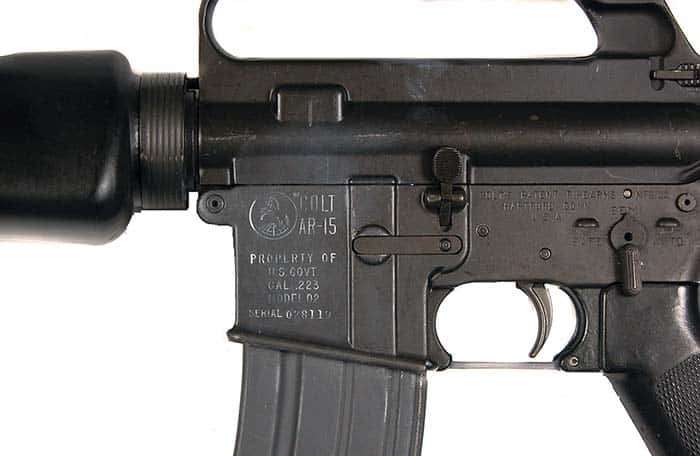
Training
It is significantly easier to train a soldier with the AR-15 rifle than with the M14 rifle. Based on tests conducted by the U.S. Air Force and by CDEC in Vietnam, it is expected that the AR-15 rifle will produce significantly more experts and significantly fewer unqualified shooters than the M14 rifle. In accuracy at all ranges of U.S. Army interest for rifles, the AR-15 is at least as effective as the M14 rifle, and the AR-15 rifle ammunition has further growth potential in this respect.
Penetrating Power
The penetrating power of the AR-15 bullet is adequate and, in respect to the stated requirement, is comparable to that of the M14 at intermediate ranges. The U.S. Army service test of the AR-15 determined that both the AR-15 and the M14 meet the established penetration requirement; i.e., the capability to inflict a fatal wound, through an armored vest and a steel helmet. At 500 yards the AR-15 bullet slightly exceeds this criterion. The major defects of the M14 rifle system are recoil, weight, size, cost and finally ammunition that possesses penetrating capabilities beyond ranges of any practical interest. The AR-15 bullet was designed to meet the 500-yard criterion and no more. The Infantry Board suggested that the penetration characteristics could be enhanced if steel cores were used.
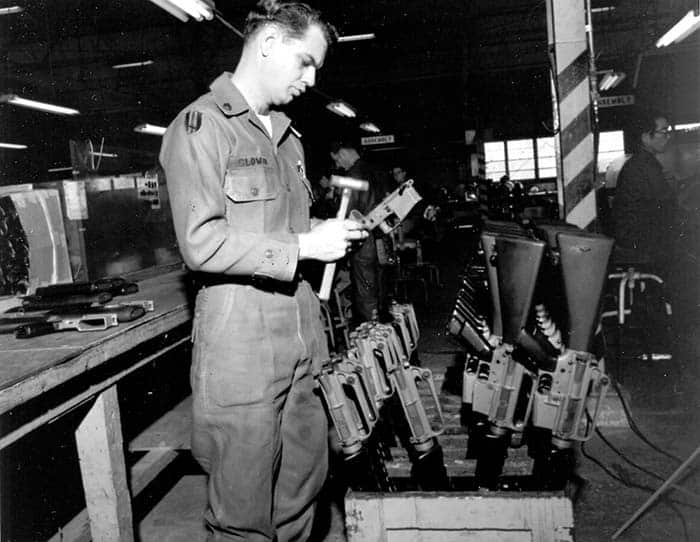
Cost and Logistics
The AR-15 rifle is considerably easier to manufacture than the M14 rifle. Because of the design features, the receiver, which has been especially difficult to manufacture on the M14, is made from a precision aluminum forging. The majority of other AR-15 parts are made by automatic screw machine, the stock and handguard are molded from plastic. Sufficient quantities of AR-15 rifles have been manufactured (approximately 7,000) to indicate there should be no special problems in quantity production. An additional assurance factor, the product of this pilot production is being troop tested in the field.
The total program cost of the M14 rifle for the fiscal year 1961 was $164 per rifle. This high cost reflects development production base and a number of problems that were encountered in producing this weapon. The average cost for all years through 1962 was $147 per rifle. The program cost for the fiscal year 1963 is $114 per rifle reflecting solutions of the production problems and amortization of the production base. The cost of 50,000 AR-15 rifles is estimated to be $101 per rifle. This should be reduced further with the learning curve improvement.
Ammunition Costs
Ammunition as a consumable is a major cost on the basis of quantities of the ammunition required. For the M14 rifle, ammunition consumed during its service life will cost several times as much as the rifle. The cost of M14 ammunition for the fiscal year 1963 is $90 per 1,000 rounds. The estimated price of AR-15 ammunition, based on a firm price quote from a manufacturer, is $67 for 1,000 rounds.
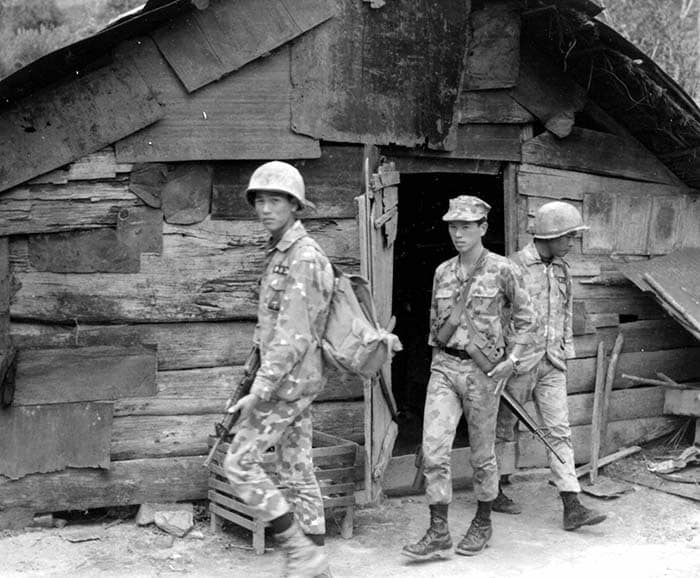
Vietnam Field Test Report
Below is an excerpt from a 1962 final report of a six-month combat test of 1,000 AR-15 rifles in Vietnam. The results confirm that their actual lethality is considerably greater than assumed from laboratory studies and shooting water cans, green coconuts, watermelons and deer.
“The lethality of the AR-15 and its reliability were particularly impressive. Confirmed casualties inflicted by the AR-15, including extremity hits, were fatal. Bodies were recovered, and the nature of the wounds examined. A hit in the arm caused the arm to fall off. A hit in the fleshy part of the buttocks was fatal in five minutes. A chest wound caused the thoracic cavity to explode. Ranges reported were 15 to 250 yards, size of the sample was from 40 enemy casualties.”
Trouble in the Field
Despite the glowing reports about the AR-15, after the widespread issue of the weapon to the troops in Vietnam, some disturbing reports began to flood in. The weapons were jamming and spent cases were freezing in the chambers. The problem was the result of, not one, but several issues: the ammunition, the rifle’s construction and a lack of training and maintenance.
Letters were being sent home, to newspapers and to Washington representatives, by soldiers and Marines, describing how men were being killed in combat because their weapons malfunctioned. It was enough to warrant a Special Subcommittee on the M16 Rifle Program in the U.S. House of Representatives. These proceedings within the Armed Services Committee were known as the Ichord Hearings. After the problems were exposed, action was taken to develop a weapon system that would function properly and led to the upgraded M16A1 model.
Most problems encountered with the rifle were found to be the result of a decision to load 5.56mm ammunition with Olin Mathieson WC846 Ball powder, instead of the DuPont IMR4475 powder the weapon was designed around. Ball powder burns faster than IMR and sped up the gas pressurization of the rifle, which started the extraction cycle too soon as well as increasing the full-auto cyclic rate. The AR-15 was designed to have a cyclic rate of 700 to 800 rounds per minute; with ball powder, it increased up to 1,000 rounds per minute. Problems around the failures to extract were due to the bolt unlocking prematurely due to the Ball powder. There was still residual pressure in the chamber, and the expanded cartridge cases did not have sufficient time to contract to be easily extracted. Corroded barrel chambers compounded the problem.
Adding to the poor performance of the AR-15 rifle in the damp tropical environment of Vietnam was the failure to chromium plate the chamber to prevent corrosion. Rust would quickly form, resulting in a rough chamber in which the cartridges would stick. The M14 had a chromium plated barrel and chamber, why not the AR-15? An infamous quote by William Davis, Jr. one of the Secretary of Defense Robert McNamara’s staff was “If the rifle needed a chrome chamber Gene Stoner would have designed it that way.” After the barrels and chambers were chromium plated the failure to extract spent cases ceased being a problem.
Even after 85,000 AR-15 rifles had been issued to Vietnam, there were no cleaning kits or instruction manuals available. Troops were told that it was unnecessary to perform any cleaning or maintenance on their weapons. This lack of cleaning, compounded by the humidity and other environmental factors, made the gun more susceptible to corrosion in the barrel and chamber. With the unavailability of cleaning supplies, manuals and maintenance training, rifles were found to be in unserviceable condition in the hands of infantry soldiers. With the introduction of Ball propellant, the fouling became more of a problem. It was not until 1967 that manuals, cleaning rods, bore and chamber brushes and lubricant were issued to the troops in the field on a large scale.
Despite its early problems, the M16 rifle would undergo several upgrades over the decades and would remain the primary infantry rifle of the U.S. military, still issued in its basic form today as the M4 carbine.
| This article first appeared in Small Arms Review V22N2 (February 2018) |











